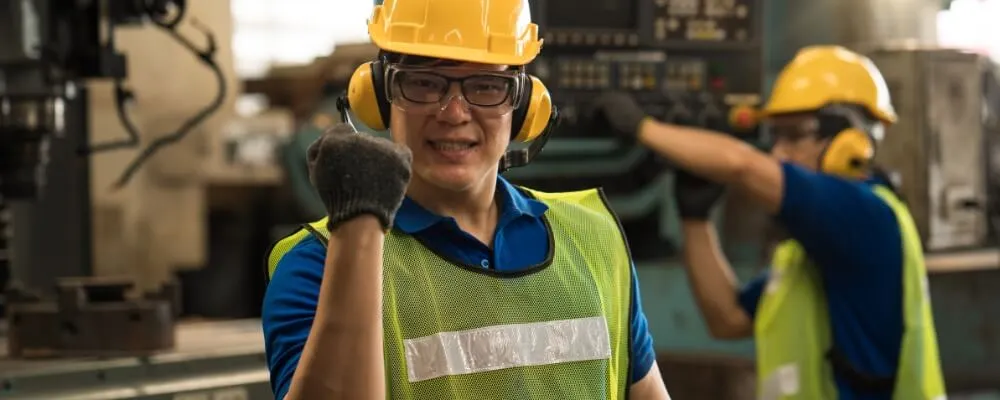Safety has always been paramount in any workplace setting. Ensuring the safety of employees not only upholds a company’s moral obligations but also enhances productivity and reduces costs associated with accidents and injuries. One cannot stress enough the importance of creating an environment where employees feel secure, allowing them to focus solely on their tasks without the looming fear of potential hazards.
Over the years, various strategies have been implemented to enhance workplace safety. One of the most revolutionary approaches has been the incorporation of ‘Safety by Design’ principles. This principle dictates that safety should be an integral part of the design process rather than an afterthought.
Understanding Safety by Design Principles
‘Safety by Design’ is a proactive approach. Instead of reacting to accidents or incidents after they occur, we design systems and processes from the outset to minimize or eliminate potential hazards. This philosophy posits that the most effective way to manage and prevent risks is at the design phase, ensuring safety is embedded at the earliest stages of a project or process.
The history of ‘Safety by Design’ can be traced back to the early industrial age when machinery and industrial processes first became complex. As industries grew, so did the potential risks associated with them. The earlier approaches to safety were mainly reactive, with measures taken after an accident. Over time, it became evident that waiting for accidents to happen was neither efficient nor humane. This led to a shift in thinking, and gradually, the idea of designing with safety in mind began to take hold. Pioneers recognized that many accidents could be avoided by considering potential risks during the design phase.
Its core principles and objectives lie at the heart of ‘Safety by Design.’ These principles emphasize eliminating hazards at their source rather than managing them later. This might involve redesigning a process to remove a dangerous step or choosing materials that are inherently less hazardous. The main objectives of ‘Safety by Design’ are to:
- Prevent harm by identifying and eliminating hazards early in the design phase.
- Enhance the overall safety culture by making safety an integral part of every decision-making process.
- Reduce costs by preventing accidents, leading to downtime, legal fees, and compensation claims.
- Promote innovation by challenging designers and engineers to think differently about safety and develop novel solutions to potential problems.
‘Safety by Design’ is not just a guideline or a checklist. It is a philosophy that places the well-being of employees at the forefront of any design or process. Integrating these principles into the workplace ensures a safer environment, fosters innovation, and reduces long-term costs. As businesses continue to evolve, it is imperative that ‘Safety by Design’ principles remain at the core of this evolution.

10 Benefits of Implementing Safety by Design
The ‘Safety by Design’ philosophy extends beyond just the initial act of designing safe environments and processes. When integrated effectively, it brings myriad benefits that positively influence various facets of a business and its stakeholders.
- Reduction in Workplace Accidents and Incidents: The most direct and tangible benefit is the marked reduction in accidents and incidents. By eliminating or minimizing risks at the design phase, the likelihood of accidents occurring during operation decreases substantially.
- Improved Employee Morale and Productivity: A safe workplace is a happy workplace. When employees recognize that their safety is a top priority, it boosts their morale. A positive and secure working environment can directly lead to increased productivity, as employees are more focused on their tasks without the distraction of potential hazards.
- Long-term Cost Savings: While there might be an initial investment to implement ‘Safety by Design’ principles, the long-term savings are significant. Costs associated with accidents, such as medical expenses, downtime, and potential legal fees, can be excessive. By preventing these accidents, companies can save a considerable amount over time.
- Enhanced Organizational Reputation: A company that places a premium on safety is often viewed favorably by stakeholders, customers, and the general public. This positive reputation can increase trust, making attracting and retaining top talent and customers easier.
- Innovative Thinking: Implementing ‘Safety by Design’ principles often requires thinking outside the box. This can foster a culture of innovation, where employees are encouraged to develop creative solutions for safety concerns and other challenges.
- Compliance with Regulations: By integrating safety into the initial design, organizations are better poised to meet or exceed regulatory requirements. This can prevent potential fines or sanctions and ensure smoother operations.
- Enhanced Risk Management: Safety by Design provides an organized and structured approach to risk management. By identifying potential hazards early, companies can develop comprehensive strategies to manage or eliminate them.
- Sustainable Business Practices: A safer design often correlates with more sustainable and environmentally friendly operations. This can further bolster a company’s reputation and align with modern consumers’ expectations.
- Improved Stakeholder Confidence: Investors and shareholders are more likely to have confidence in a company prioritizing safety. This can lead to increased investment and financial stability.
- Facilitated Training Processes: Training processes become more straightforward when safety is integrated. Employees are trained on systems designed with their safety in mind, making understanding and adhering to safety protocols easier.
In essence, ‘Safety by Design’ offers a comprehensive approach that benefits the immediate safety of employees and the broader aspects of business operations and stakeholder relations. It’s an investment that promises substantial returns in various dimensions of an organization.

Key Elements of Safety by Design Integration
The integration of ‘Safety by Design’ into a workplace or a project is not a solitary process. It involves a systematic approach, with several key elements crucial in ensuring that safety measures are effective and sustainable in the long run.
1. Collaboration between Designers, Engineers, and Safety Experts
A holistic approach to safety cannot be achieved without the collaborative efforts of multiple professionals. Designers and engineers provide technical expertise and understanding of how a process or product works and how it is constructed.
On the other hand, safety experts have a wealth of knowledge about potential hazards and preventive measures. By working together from the outset, these professionals can ensure that designs are functional and safe. This collaboration breaks down silos, allowing for a more cohesive, comprehensive approach to safety that addresses potential issues from various angles.
2. Risk Assessment and Hazard Identification
One of the foundational aspects of ‘Safety by Design’ is the early identification of risks. Before implementing any design or starting a project, it is vital to conduct thorough risk assessments. This involves studying the entire process or structure to identify potential hazards. By recognizing these risks early on, teams can either design them out of the process or develop controls to manage them effectively.
3. Selection of Materials, Equipment, and Technologies
The choices made regarding materials and equipment can significantly influence the safety of a design. Opting for non-toxic, fire-resistant materials is essential or less likely to cause harm in the event of a malfunction.
Similarly, equipment and technologies should be chosen based on their safety features, reliability, and ease of use. Sometimes, the safer choice might be more expensive initially, but it pays off in the long run by reducing the chances of accidents and their associated costs.
4. Ergonomic Considerations for Human Factors
Any design or process that involves human interaction must account for ergonomic factors. This means considering the physical and psychological aspects of how humans interact with machines, tools, and environments.
Proper ergonomic design ensures that workspaces and tasks align with human capabilities, reducing the strain and potential for injury. For instance, designing workstations that promote good posture can prevent musculoskeletal disorders, while ensuring controls and displays are intuitive can reduce the chances of errors.
5. Emergency Response Planning within Design
Even with the best safety measures, preparing for emergencies is always wise. Integrating emergency response planning into the design phase ensures that, should the worst happen, the damage can be mitigated and lives saved. This might involve designing evacuation routes, integrating alarm systems, or ensuring emergency shut-off mechanisms are easily accessible. By thinking about these factors during the design phase, organizations can ensure they’re prepared for any scenario.
Integrating these key elements into the ‘Safety by Design’ process ensures that safety measures are comprehensive, addressing potential hazards from every angle. By taking a holistic, collaborative approach, organizations can create environments and processes that protect their most valuable assets: their people.

Steps to Integrate Safety by Design in the Workplace
Implementing the ‘Safety by Design’ philosophy necessitates a structured and methodical approach. Here are five essential steps organizations can adopt to seamlessly integrate safety principles from the design phase to daily operations.
1. Incorporating Safety from the Initial Design Phase
The first step is a fundamental shift in mindset. Safety considerations should not be an afterthought. Instead, they should be integral from the moment a concept is conceived. This means potential safety issues should be identified and addressed before a project or process is outlined. By beginning with safety at the forefront, many potential hazards can be avoided entirely, making subsequent steps more effective.
2. Establishing Clear Design Guidelines and Standards
Clear guidelines and standards must be in place for ‘Safety by Design’ to be consistently applied across projects and departments. These standards should cover everything from material selection to machine operations, ensuring that every facet of a design or process meets predetermined safety criteria. Organizations might adopt international safety standards, modify them to fit their specific context, or develop in-house standards based on their unique challenges.
3. Regular Training and Awareness Programs
Even the best safety designs can fail if the individuals interacting with them are unaware of their roles and responsibilities. Regular training ensures that all employees, whether designers, engineers, or end-users, understand the safety principles in their work environment. This training shouldn’t be a one-time event. Instead, as new safety concerns are identified, or processes change, training should be updated and re-administered to ensure everyone remains on the same page.
4. Iterative Feedback and Improvement Processes
No design is ever perfect. New challenges and technologies will evolve as time passes, and unexpected issues may arise. To address this, it’s crucial to have a feedback loop in place. Workers on the ground often have a clearer picture of potential hazards or issues with a design. Organizations can continuously improve their safety measures by regularly soliciting and acting on feedback. This iterative process ensures that ‘Safety by Design’ is dynamic, adapting to the changing needs of the workplace.
5. Engaging External Experts for Regular Audits
Sometimes, an external perspective can shed light on overlooked issues. Organizations can gain valuable insights by inviting safety experts and auditors to evaluate the safety measures. These experts come with a wealth of experience from different industries and can provide recommendations to enhance safety further. Regular audits ensure that the organization’s safety measures meet the highest standards and that any emerging risks are promptly addressed.
Incorporating ‘Safety by Design’ requires a comprehensive approach, from the initial design phase to continuous evaluation and improvement. By following these steps, organizations can foster a culture where safety isn’t just a priority but an integral aspect of every operation.

Overcoming Challenges In Integrating “Safety By Design”
The journey to integrate ‘Safety by Design’ has its obstacles. As with any transformative initiative, challenges are bound to arise. Addressing them proactively ensures the successful implementation and sustainability of safety protocols.
1. Resistance to Change and Misconceptions
One of the primary challenges many organizations face is resistance from staff and stakeholders, often rooted in misconceptions. Some might see the integration of safety measures as an unnecessary expense, while others could view it as a hindrance to efficiency. Overcoming this resistance requires clear communication about the benefits of ‘Safety by Design’. Highlighting long-term savings, enhanced productivity, and the moral imperative of ensuring a safe workplace can sway opinion.
Moreover, presenting real-life case studies where proactive safety measures have made a tangible difference can be influential. To address misconceptions, targeted educational campaigns and workshops can be organized to dispel myths and provide factual information about the importance and benefits of safety integration.
2. Balancing Safety with Other Design Considerations
While safety is paramount but not the only consideration during the design phase. Aesthetics, functionality, cost-effectiveness, and other factors also come into play. The challenge is to strike a balance where safety does not compromise other design objectives. This can be achieved through collaboration.
A harmonious balance can be found by involving designers, engineers, and safety experts from the outset. Creative solutions can be devised that marry safety with aesthetics and functionality. Additionally, leveraging modern technology and innovative materials can aid in developing designs that cater to all considerations without compromising safety.
3. Ensuring Compliance with Regulations and Standards
As industries evolve, so do the regulations and standards governing them. Keeping abreast of these changes and ensuring compliance can be challenging. Regular training sessions and workshops can keep the staff updated about the latest regulations.
Collaborating with regulatory bodies and industry associations can also be beneficial, as they can provide insights into upcoming changes or areas of focus. Investing in dedicated compliance teams or software tools that monitor and alert about regulatory changes can also be instrumental in ensuring that an organization remains compliant at all times.
While challenges in the journey to integrate ‘Safety by Design’ are inevitable, they are not insurmountable. With proactive strategies, clear communication, and a commitment to prioritizing safety, organizations can navigate these challenges effectively and ensure a safe, productive, and compliant work environment.
Conclusion
The modern workplace is more than just a space for productivity; it’s a testament to an organization’s values, priorities, and commitment to its most valuable asset – its people. By embracing the ‘Safety by Design’ principles, businesses showcase a dedication beyond mere regulatory compliance. They champion a culture where safety is intertwined with innovation, efficiency, and success.
As we’ve journeyed through the facets of this proactive approach, it’s evident that integrating safety from the get-go is beneficial and essential for sustainable growth. It’s an investment in the present that safeguards the future, fostering an environment of trust, confidence, and mutual respect. In essence, ‘Safety by Design’ isn’t just a methodology or a set of guidelines; it’s a vision for a safer, more responsible, and conscientious tomorrow.

